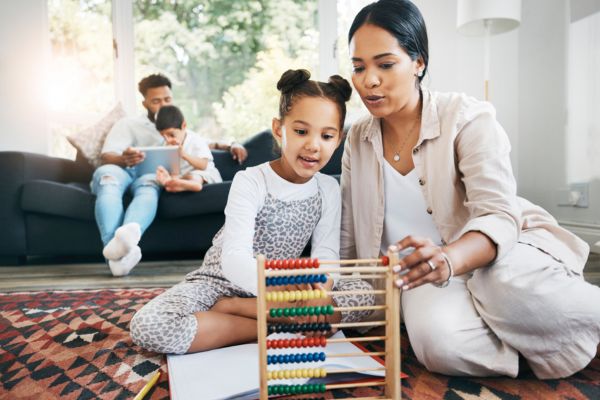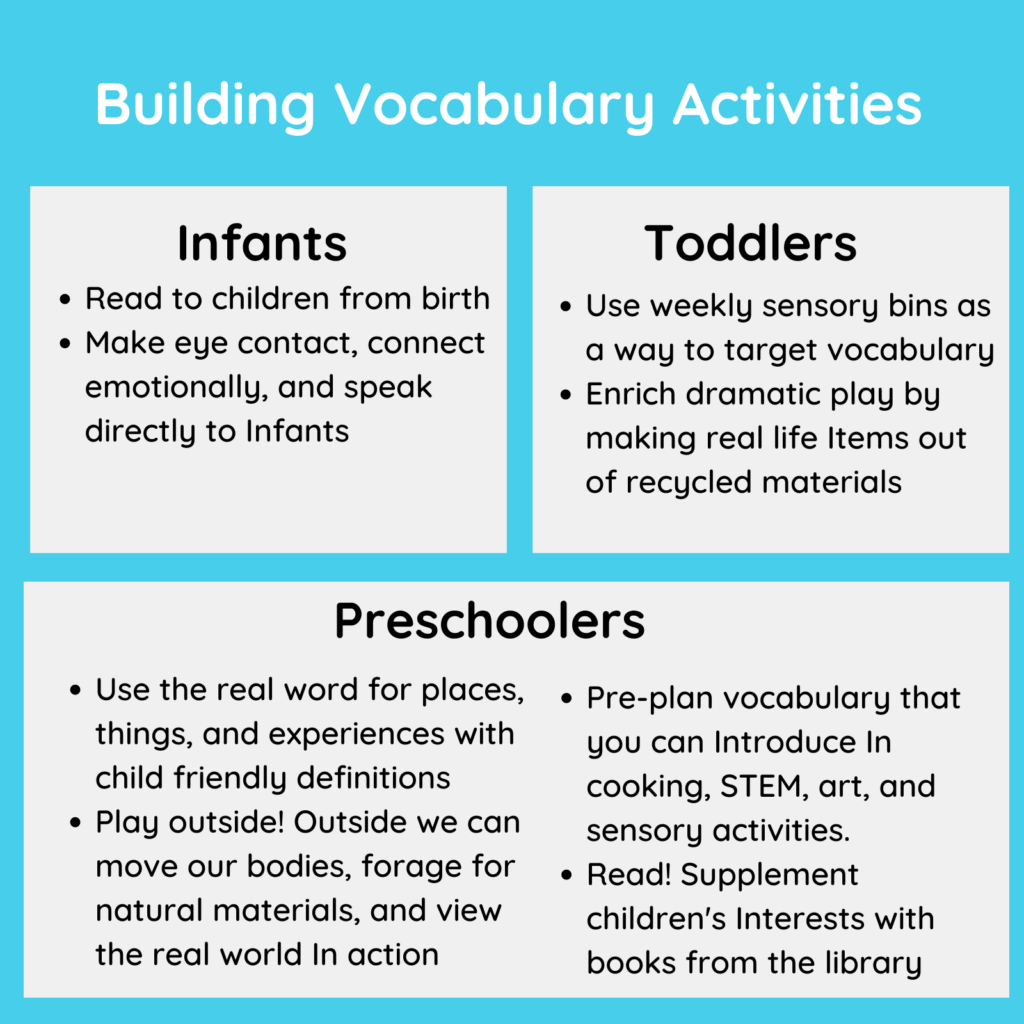
The rich capacity in humans to communicate through speech, sign language, emotions, and movement is an incredible thing to witness. Many caregivers and parents may wonder what kind of language to expose children to. The most important key to building children’s language and vocabulary is to give them language to describe the things that are meaningful to them. This means language that will help them to connect emotionally to others, identify their wants and needs, and to enrich their play!
There are many ways that caregivers can support the development of children’s vocabulary. From birth, caregivers can connect emotionally with children, smile, ask them questions, sing songs, and read books, and these are useful tactics that never grow old. As children begin to move their bodies and point to indicate their interest in objects, caregivers can narrate their play or acknowledge their interest. For a child who is particularly interested in trucks, caregivers can say “Oh I see you are pointing at the garbage truck. I wonder what they have in the back of the truck? I wonder where it’s going?” Allow children to respond with what words they can, which might be just a short imitation of the word truck “tuck” or garbage truck “ga-tuck”.As children grow, caregivers can help to introduce and define bigger words in child friendly language. For example, while reading a book about the apples, caregivers might encounter the new word “harvest”. The caregiver might define this word in a child-friendly definition by saying “A harvest is when they cut all the food and do things with it, like eat it, sell it, dry it, or make other things”, while inviting children to mimic picking the apples, eating them, and making apple sauce. In this way, caregivers can use the real words for things, but help to put them into context and explore them through movement, a modality that helps children connect to the real meaning of a word.
When planning activities to do with children, caregivers can imagine where they might narrate children’s play or introduce new vocabulary. Caregivers, particularly when working with mixed age groups, can pre-plan the types of vocabulary they might like to use with children based on their age level. Let’s imagine a bird sensory bin with bird seed and scoops for children to measure and pour, which is fun for children of all ages and abilities. For younger children, caregivers might focus on the language of empathy, narrating “Oh I see you are preparing food for a bird, you are pouring cups of seeds”. For older children, they might do this same activity but read a book beforehand about the types of food that different birds eat, based on their beaks. If children demonstrate interest in this topic, they might indicate that this is an herbivore sensory bin, for birds that eat seeds, nuts, and fruit. With language we can always go deeper, and when we are following the children’s interests, we as caregivers can also learn along the way!

For more activities that help build a child’s vocabulary, visit rayzkidz.com/category/activities